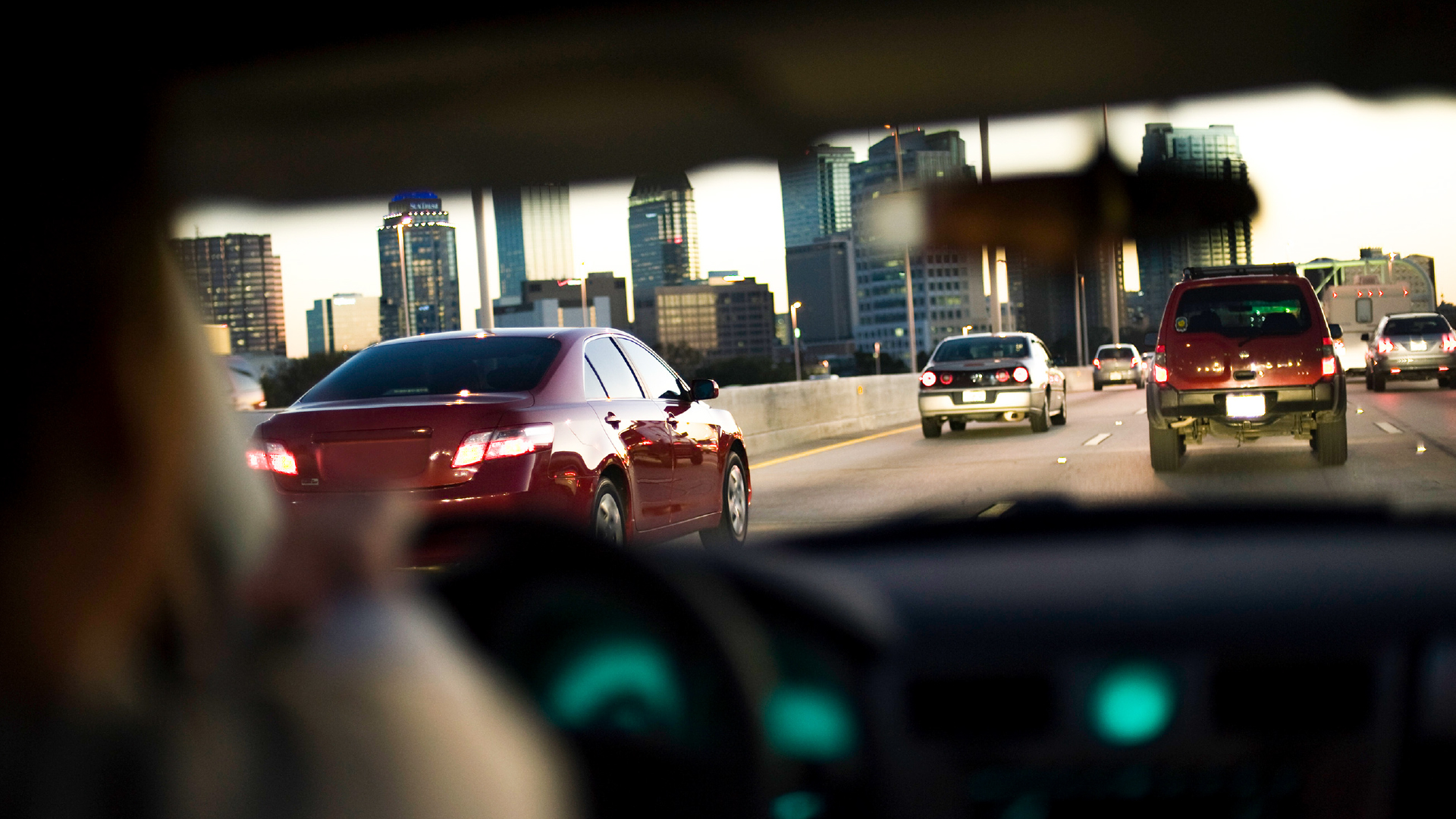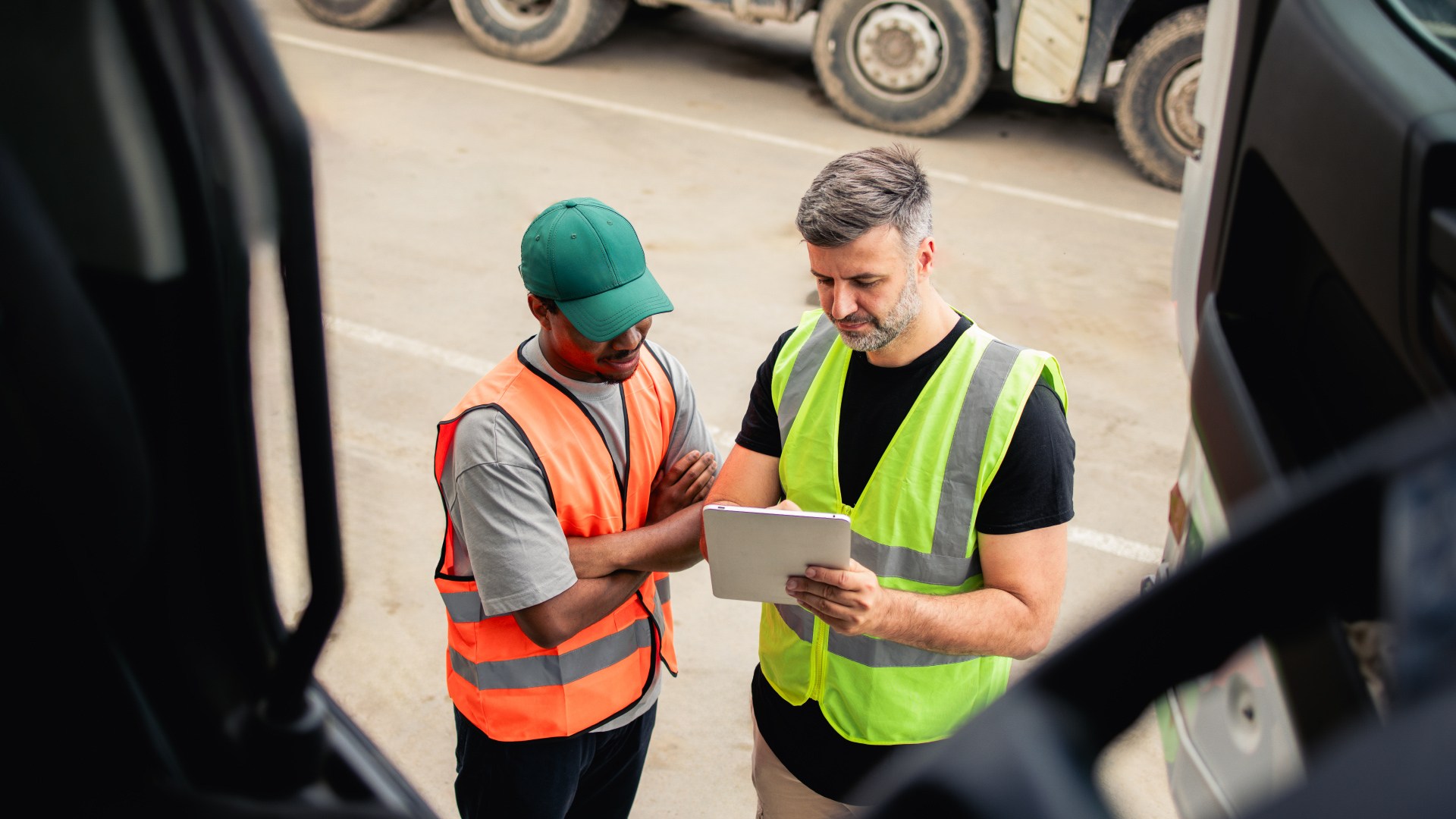Enhancing student bus safety: Combating distracted driving in the digital age
Student bus safety relies on drivers not being distracted by technology or roadside signage. Video telematics can provide a means to coach and correct distracted behavior.

Key Insights
- While student bus safety continues to be high, distracted driving due to technology and roadside advertising and signage is rising
- Distracted-related bus collisions can lead to injuries, deaths and significant liability
- The use of video telematics to monitor driver behavior is a powerful way to correct and coach distracted driving behavior before a crash occurs
We may be at the brink of solving the final challenge to student bus safety: Distracted driving. Distractions are everywhere, from animated business signs and billboards for the latest blockbuster to navigation devices and smartphones. Modern life seems designed to keep us unfocused on our day-to-day tasks. Fleet management technology, however, can provide transportation directors with the ability to monitor driver distractions, correct them in real-time, and protect school districts from ruinous, false allegations of wrongdoing by drivers.
The rising tide of distractions: A challenge for modern bus drivers
Distracted driving has been a growing menace over the past decade, with many experts placing the blame squarely on connected devices—specifically, cell phones, which push out a seemingly endless stream of social media notifications. But distracted driving hasn’t happened in a vacuum. Connected vehicle technology—GPS, in-vehicle communications devices, and even anti-collision technology—has added to the distractions in vehicles. Outside vehicles, there are seas of colorful signage, animated advertising gimmicks or other vehicles that may be driving in reckless or distracted manners.
Along with these distracted driving risks, the road environment has seen a marked increase in congestion—particularly in large urban centers—and crumbling infrastructure that makes driving more complex and stressful, requiring increased bus driver focus. Due to all of these influences, student bus safety has become an ongoing challenge to maintain.
While school bus transportation is inherently safe (with 0.2 fatalities per 100 million vehicle miles traveled compared to 1.5 fatalities per 100 million vehicle miles traveled for personal vehicles), the prevalence of distracted driving in discussions about student transportation dangers can’t be ignored. The risk of even small distractions is high.
For example, if a driver traveling at highway speed takes his or her eyes off the road for just five seconds to check a text or read a social media notification, when they look up, they’ll find they’ve traveled the length of a football field. This is a huge distance to move without eyes on the road, and from a student bus safety perspective, it could be devastating.
Understanding the real-world impact: Distracted driving and student safety
Even with school bus transportation’s inherently strong safety record, collisions involving buses unfortunately do occur—often making local and even national news. While it’s difficult to determine how many school bus collisions are the result of distracted driving, overall, the National Highway Traffic Safety Administration (NHTSA)’s own distracted driving statistics puts the number of deaths at over 3,300 per year and estimate that 20% of all collisions are a result of the driver being distracted by something.
There have been a number of high-profile collisions that were the result of distracted drivers colliding with school buses or having struck students who were entering or exiting buses. In recent years, safety compliance for school buses has likely helped keep the number of high-profile school bus collisions to a minimum, or at least the consequences–injuries or deaths–much lower. With many modern buses equipped with seatbelts, passing arm warning devices and other integrated safety tools, the severity of collisions has generally decreased.
However, there have been a number of high-profile distracted driving collisions resulting from the bus driver being distracted, which illustrates why transportation directors must look inside the bus, as well as outside it, when developing anti-school bus collision strategies.
For example, a 25-year veteran bus driver for the Crosby (Texas) ISD took her eyes off the road for just a few seconds and overturned her bus. The result: The driver and 16 students had to be taken to a local hospital with non-life-threatening injuries.
Costs can extend beyond just injuries or fatalities, but in economic damage to the school district. For example, a driver reached down for a dropped object before running into a parked asphalt truck. Due to this impact, a construction worker and a student were killed, with 32 other students injured. In response, there was an insurance claim for $2 million filed.
Inside the bus, students can also cause distractions of their own. A Bristol, N.H., school bus driver following several other buses caused a multi-school bus collision when he was distracted by disruptive students and failed to see that the other buses were stopped in front of him due to a construction project. Thankfully, there were no injuries and no charges filed, but the incident was publicly reported, potentially damaging public confidence in the district’s student bus safety.
The evolving landscape: Why distractions are more prevalent than ever
While your drivers’ skills likely haven’t regressed, the number of distractions they encounter on any given day—either directly or through the actions of other drivers—have greatly increased.
Connected technology, whether it’s in our hands or in our vehicles, isn't going away. Worse still, the shift toward always being connected is leading to information overload—our brains are racing at full speed all the time because of it. We’re now primed to be distracted, and even outside distractions like animated billboards and other roadside signs are designed to capture your attention, even at the expense of our safety. As a result of all of these factors, distracted driving was found to have risen about 30% per mile from 2019 to 2023.
We all know that we’re facing overload and distractions inside and outside the vehicle are increasing. But connected technology is an inescapable necessity to function in modern society. We rely on it to help us navigate our way to destinations, keep in touch with friends, family and colleagues, make payments and schedule appointments and conduct virtually every other aspect of modern life. The digital world isn’t going away, and neither are distractions, including using cell phones while driving.
However, a troubling reality is that only 25 states and the District of Columbia prohibit school bus drivers from using their cell phones while driving. Relying on digital communication devices and navigation are helpful in keeping school buses on time and even safer, but there is a fine line between using a tool and being distracted by it.
Video telematics: A proactive solution for student bus safety
There is a solution to bus driver distraction: Video telematics for buses. This powerful tool provides real-time monitoring and enables the prevention of distracted driving. These systems capture real-time footage of driver behavior behind the wheel and road conditions outside the vehicle. There are a number of video telematics solutions available that can be integrated into Geotab’s solution, providing a comprehensive, robust stream of actionable data that can help you increase efficiency and school bus safety.
With video telematics for buses, you have real-time eyes on your drivers, providing opportunities to coach and correct behavior as it happens and as you witness it. Even the best drivers make mistakes, and coaching them in the moment keeps students safe, and reinforces good habits that will be carried on to the next shift and the next and next.
You will be able to help prevent bus driver distractions, such as looking at their phones, that could lead to a collision before it happens—protecting your driver, the students, the public, your district’s equipment and your reputation.
Empowering drivers and maintaining peace of mind: The future of student bus safety
It is not uncommon for drivers to initially push back on bus fleet monitoring, but these video telematics solutions can empower them to be at the top of their game and correct bad habits, prioritizing student bus safety. Often, after the initial complaints, drivers come to embrace the technology, recognizing its value both for their safety and their career, as it can provide objective evidence that they are doing a good job.
Real-time alerts and notifications allow you and the driver to address and prevent distracted driving incidents as they happen instead of after a near-miss or a collision. It allows you and the driver to be proactive in correcting a potential bad habit instead of reacting to a tragedy. For example, Geotab’s school bus fleet management capabilities can be used in tandem with video telematics to paint an accurate picture of all bus activities. You can track and curb unwanted driving behaviors like speeding, harsh acceleration, abrupt braking and fast cornering with fleet data, while also verifying that drivers are driving distraction-free.
Did you know? Geotab Vitality enables you to positively nudge your drivers to improve their performance by offering an all-in-one platform for coaching, rewards and benchmarking. Drive down risk and related costs in your operations by recognizing and rewarding safer driving.
By integrating video telematics with the Geotab solution, you will have an even more robust set of tools to manage your bus fleet. These integrations include driver behavior monitoring and collision detection and reconstruction. With these added monitoring and safety integrations, you will be alerted if and when an incident occurs. And if one does occur, with collision reconstruction, you’ll be able to identify what happened immediately before, during, and after the event—which will give you powerful evidence to help refute or minimize any fraudulent claims against the driver or the transportation department.
Perhaps most important is what telematics solutions for students bring to school administrators, parents and the community: Peace of mind. They know that with student safety technology, that the driver will be completely focused and attentive while operating the bus and that each trip will be a safe one.
To learn more about implementing student safety technology with Geotab, visit our student transportation industry page.
Subscribe to get industry tips and insights
Frequently Asked Questions
A driver traveling at highway speeds who takes their eyes off the road for just five seconds will travel the length of a football field in that time.
NHTSA estimates 20% of all collisions are a result of distracted driving; and there is evidence suggesting that distracted driving rates per mile have increased 30% since 2019.
With real-time monitoring and alerts, transportation directors can address and coach a driver immediately and before a collision occurs.
The Geotab Team write about company news.
Table of Contents
- The rising tide of distractions: A challenge for modern bus drivers
- Understanding the real-world impact: Distracted driving and student safety
- The evolving landscape: Why distractions are more prevalent than ever
- Video telematics: A proactive solution for student bus safety
- Empowering drivers and maintaining peace of mind: The future of student bus safety
Subscribe to get industry tips and insights
Related posts
Beyond tracking: Using telematics to improve customer experience
April 25, 2025
2 minute read

Geotab: Enhancing Student Safety with Data-Driven School Bus Fleet Management
April 25, 2025
2 minute read

Dash cams that protect driver privacy without missing key events
April 24, 2025
4 minute read

Ultimate heavy equipment transport guide: Top tips and systems for fleets
April 21, 2025
6 minute read

Ultimate field service management software guide [benefits + options]
April 21, 2025
5 minute read

Building a world-class driver training program: Essential strategies for truckload carriers
April 15, 2025
4 minute read